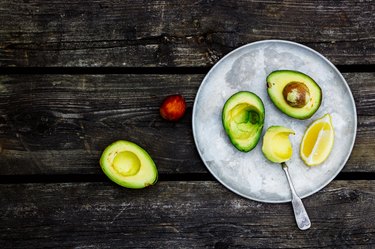
Most people need not concern themselves with foods containing latex -- a substance naturally present in some plants. However, latex-sensitive individuals might have an allergic reaction to certain foods. This is known as a cross reaction. Consult with your allergist about any dietary changes you need to make to avoid a potential reaction if you're latex sensitive.
Cross Reactivity
Video of the Day
In nature, certain plants secrete latex as a natural defense mechanism; however, most latex-containing plants are not the type you'd find in your diet. Some foods contain proteins, though, that are similar in structure to latex, which can cause your immune system to react the same as it would to actual latex exposure. This is commonly referred to as latex fruit syndrome, even though cross reaction can occur in foods other than fruit.
Video of the Day
Most Common Latex Reactive Foods
According to the American Latex Allergy Association, published reports most commonly link avocado, banana, chestnut, kiwi, apple, carrot, celery, melons, papaya, potato and tomato to latex cross reaction. This includes not only the whole foods themselves, but any foods that use any of these fruits or vegetables as an ingredient. Read food labels carefully to avoid exposure. If consumed, these otherwise healthy foods may cause hives, stomach cramps or even anaphylaxis, a life-threatening allergic reaction.
Other Problem Foods
A number of other foods could cause a reaction if you have latex allergy. However, the degree to which these foods cause a reaction is either low or undetermined, according to the ALAA. You may need to avoid the following fruits: citrus fruits, apricot, cherry, fig, grape, lychee, mango, nectarine, passion fruit, peach, pear, pineapple, strawberry, persimmon, coconut. In addition, these foods may cause problems: hazelnut, walnut, peanut, chick pea, soybean, castor bean, wheat, buckwheat, rye, shellfish, sunflower seed, shellfish, dill, oregano, sage, peppers like cayenne, bell and sweet. Tapioca also contains latex, so avoid it in all forms, including tapioca flour.
Things to Consider
It's crucial to follow your doctor's advice regarding exposure to latex and latex cross reactive foods. Some doctors may recommend that you avoid all forms of latex, while others may implement an elimination diet to determine which foods are safe for you to eat and which ones you need to avoid. Not everyone with an allergy to latex experiences cross reactions with food. Your allergist will provide guidance based on how mild or severe your allergy is.